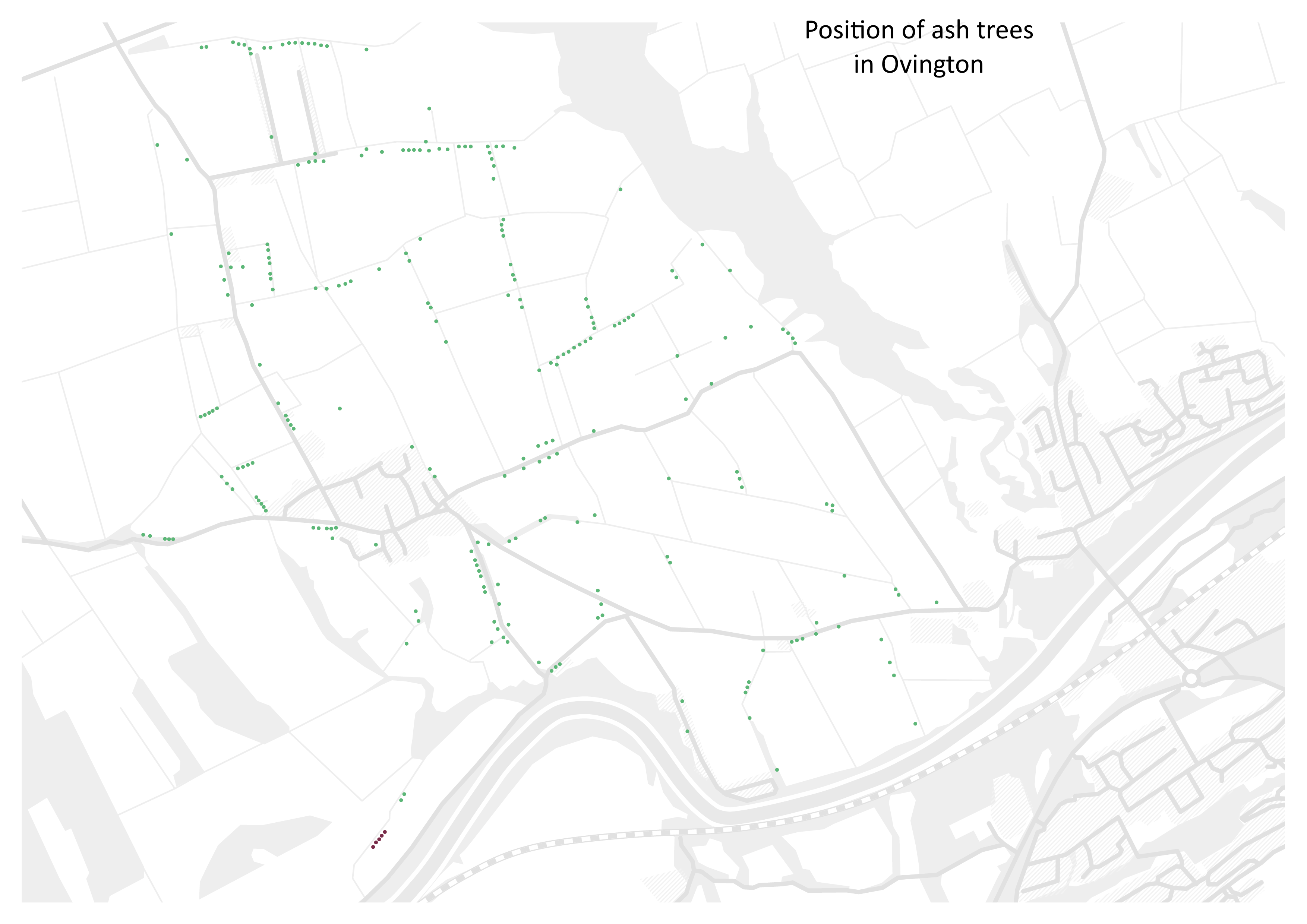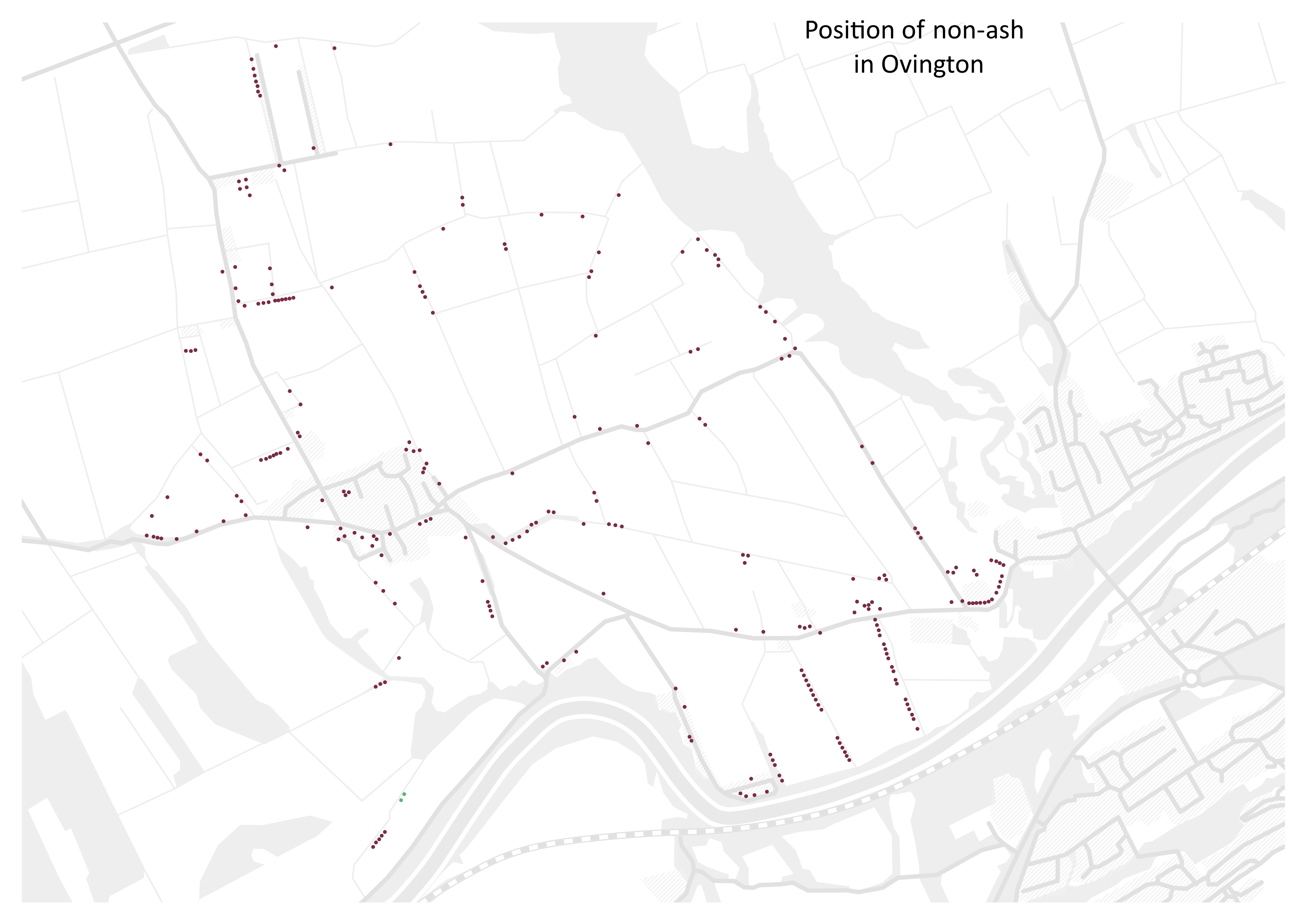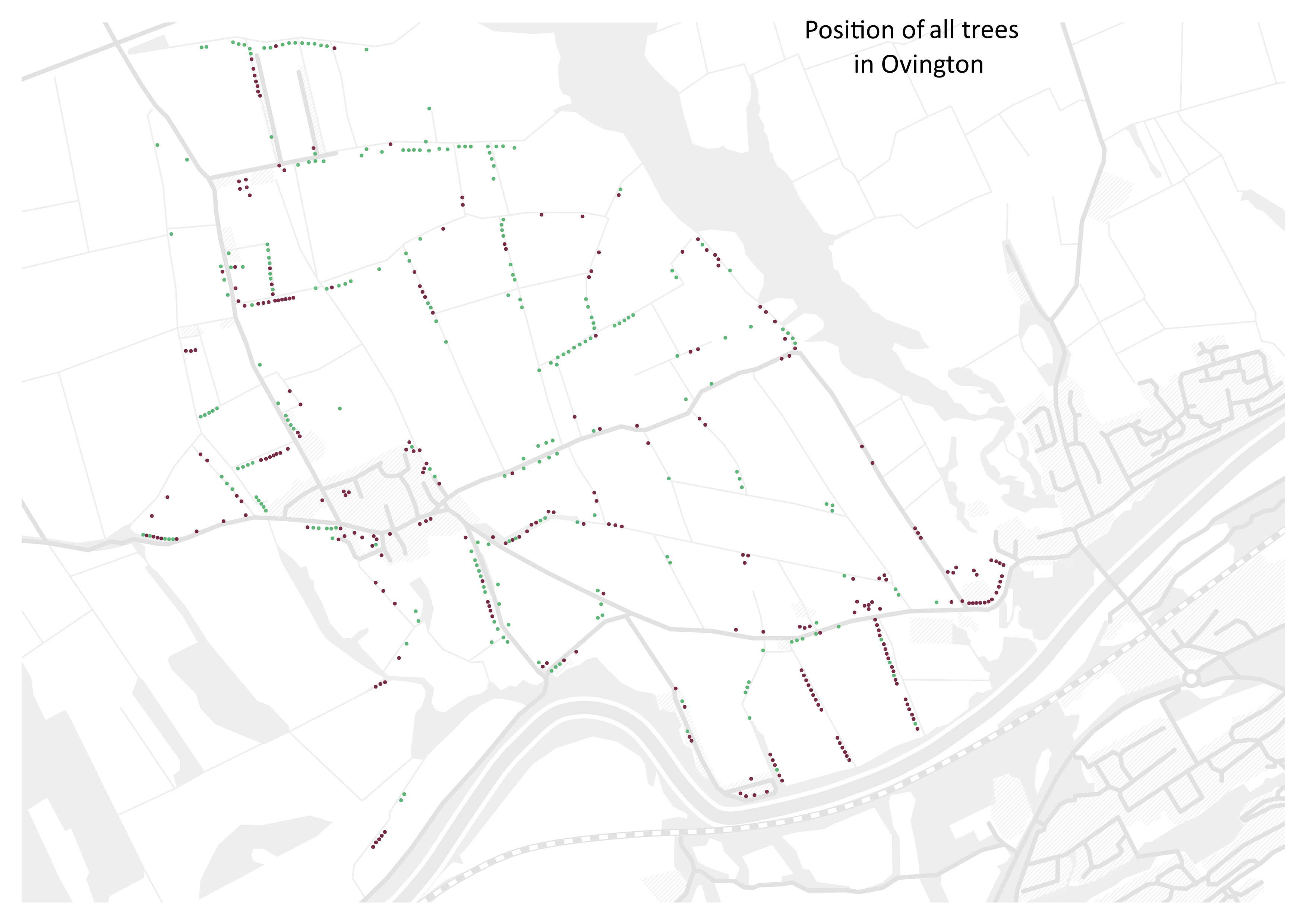Problems Faced by Trees
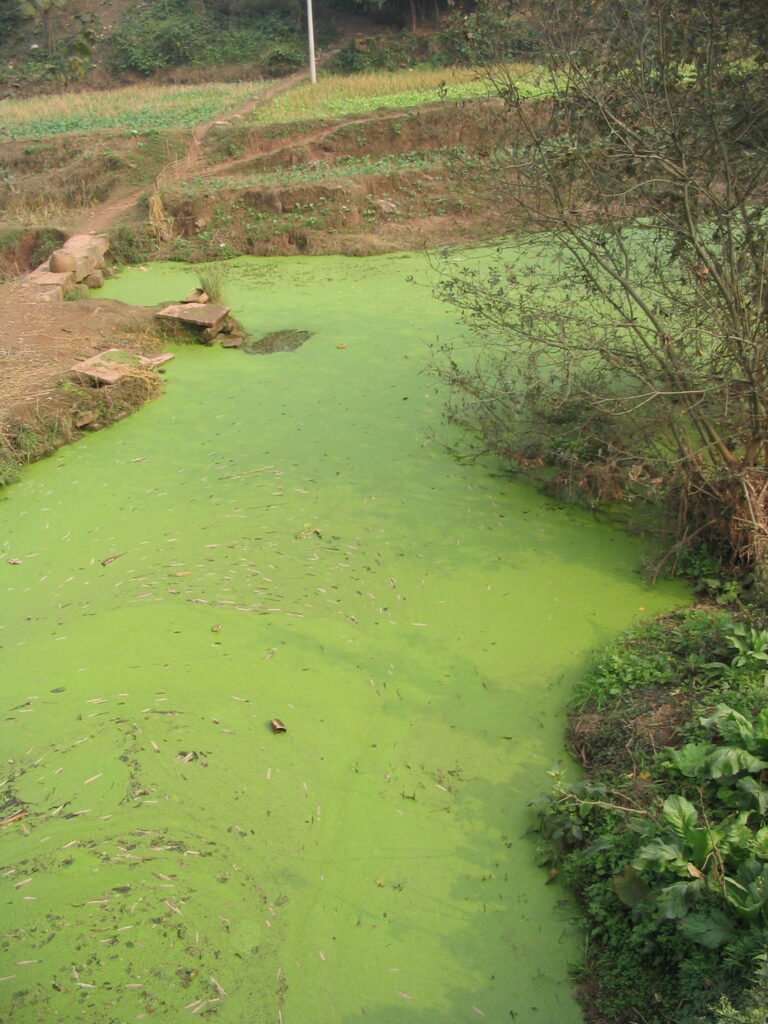
Eutrophication
Eutrophication is a process in which water bodies, such as rivers, lakes and coastal areas become enriched with nutrients, particularly nitrogen and phosphorus. These nutrients can come from various sources, including agricultural run-off, sewage, and industrial discharges. When these nutrients accumulate in water, they can lead to excessive growth of algae and other aquatic plants.
Ovington Trees worked with Tyne Rivers Trust to help prevent eutrophication along the river bank between Ferry Landing and Ovingham Schools. This area has experienced flooding and river bank scouring. The arable fields next to the river did not have a hedgerow, so there was a risk of crop overspray and nutrients getting into the River Tyne.
Tyne Rivers Trust provided oversight of:
- Riverbank stabilisation through inserting willow cuttings into the river bank to form a compact root system
- Planting of two long hedgerows next to the River Tyne
All the work was undertaken by volunteers. This was a tremendous effort that will benefit landowners, local residents and wildlife.
Source material sciencenotes.org/what-is-eutrophication-definition-and-explanation/
Ash Dieback
Ash dieback can affect ash trees of all ages. Younger trees succumb to the disease quicker but in general, all affected trees will have these symptoms:
- Leaves develop dark patches in the summer
- They then wilt and discolour to black. Leaves might shed early
- Dieback of the shoots and leaves is visible in the summer
- Lesions develop where branches meet the trunk. These are often diamond-shaped and dark brown
- Inner bark looks brownish-grey beneath the lesions
- New growth from previously dormant buds further down the trunk. This is known as epicormic growth and is a common response to stress in trees
Ash dieback (Hymenoscyphus fraxineus) is a fungus which originated in Asia. It doesn’t cause much damage on its native hosts of the Manchurian ash (Fraxinus mandshurica) and the Chinese ash (Fraxinus chinensis) in its native range.
However, its introduction to Europe about 30 years ago has devastated the European ash (Fraxinus excelsior) because our native ash species did not evolve with the fungus and this means it has no natural defence against it.
Click images below to see where ash and non-ash trees are located in the village.
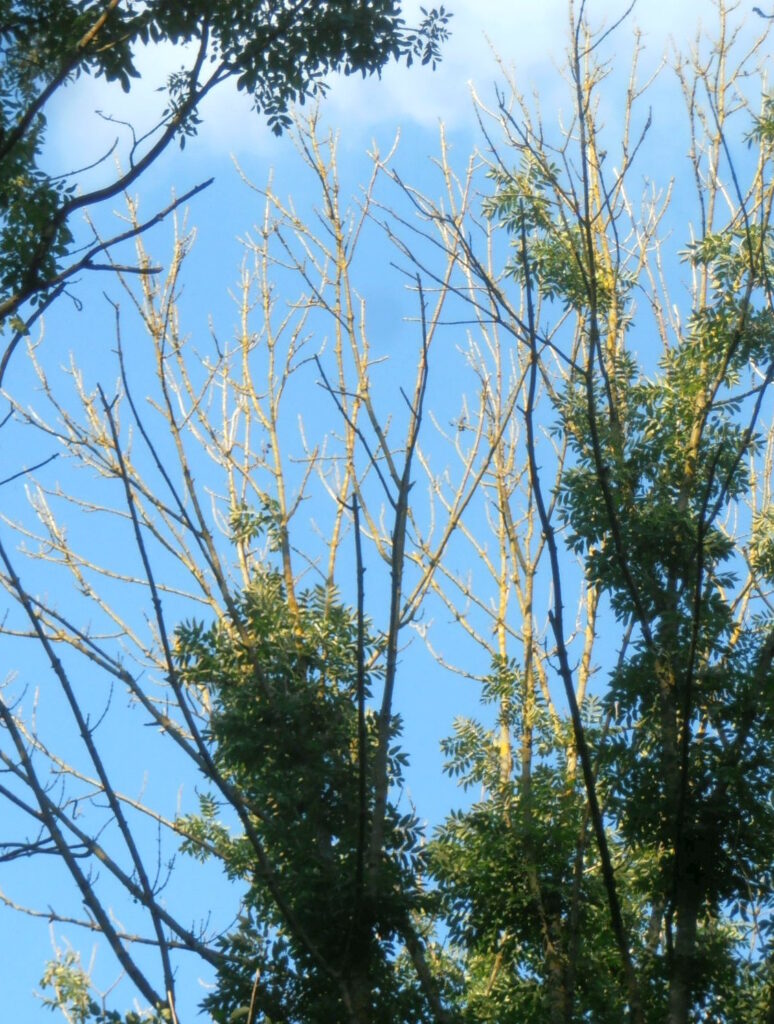
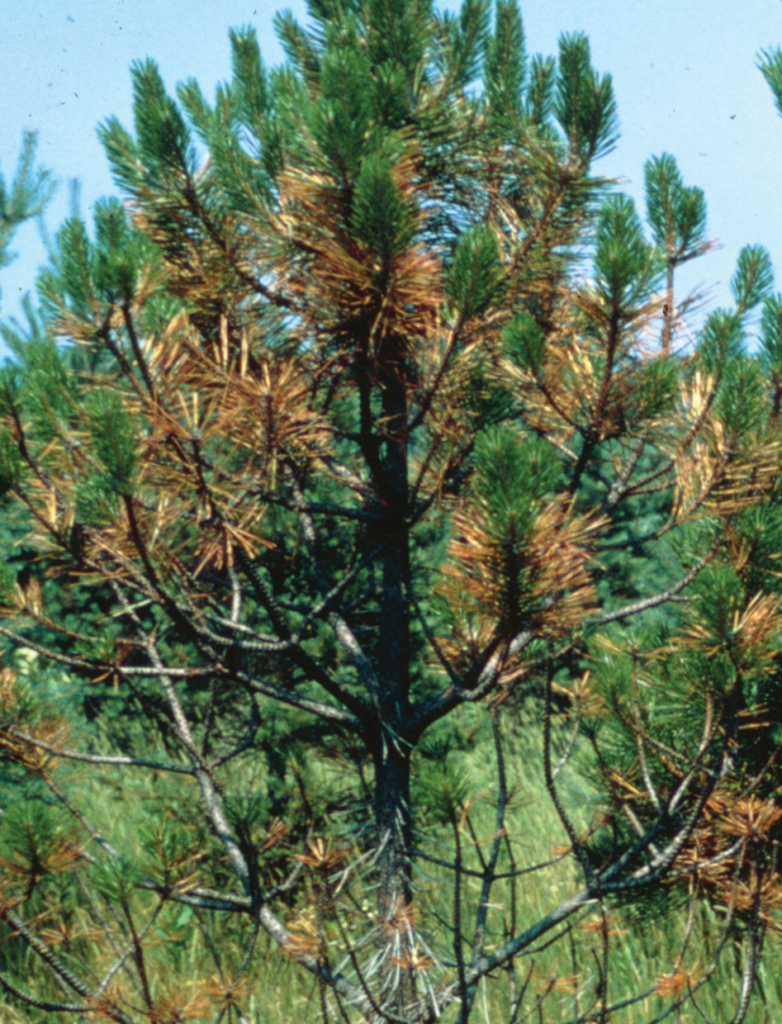
Dothistroma Needle Blight
In the UK, symptoms of dothistroma needle blight are most visible between June and July. Symptoms include :
- Needles develop yellow and tan-coloured spots and bands which turn red over time. Older needles are more affected.
- The needles might have an overall brown or reddish colour instead of distinct banding which makes it hard to distinguish.
- Infected needles are shed within a few weeks of being affected.
- Branches with shed leaves have a ‘lion’s tail’ look with only tufts of the year’s needle growth left at the end.
Dothistroma needle blight is a fungus which causes premature needle drop. It can cause a loss of yield in commercial forestry, and in severe cases, death of the tree.
Acute Oak Decline
What does acute oak decline look like?
Trees over 50 seem to be the worst affected and mature trees can die within five years. Symptoms include:
- General thinning of the crown. This can be quite sudden, occurring over a two-year period
- Extensive stem bleeding – this looks like dark weeping patches on the stem
- Dark fluid that seeps through vertical cracks between pieces of bark and runs down the tree trunk
- Stem bleeds that can stop and heal as the tree recovers from a stressed state
- As the tree becomes stressed, secondary pests and diseases begin to take advantage of the weakened tree
What is acute oak decline?
Acute oak decline is a combination of factors which cause oak trees to become stressed. Environmental stresses like soil conditions, drought, waterlogging and pollution can all impact the tree. Insects, fungi and bacteria then move in on the vulnerable tree and push it into decline.
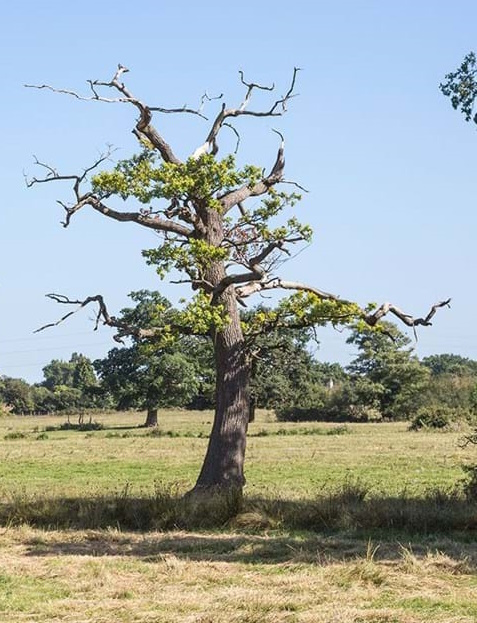

Dutch Elm Disease
There are five symptoms of dutch elm disease :
- Clusters of yellow leaves that wilt and fall
- Shoots that die back from the tip
- Twigs that bend down in a “shepherd’s crook”
- Dark streaks underneath the bark of twigs, or dark spots and rings in the cross-section
Dutch elm disease (Ophiostoma novo-ulmi) is a fungal infection which is spread by the elm bark beetle. It got its name from the team of Dutch pathologists who carried out research on the diseases in the 1920s.

